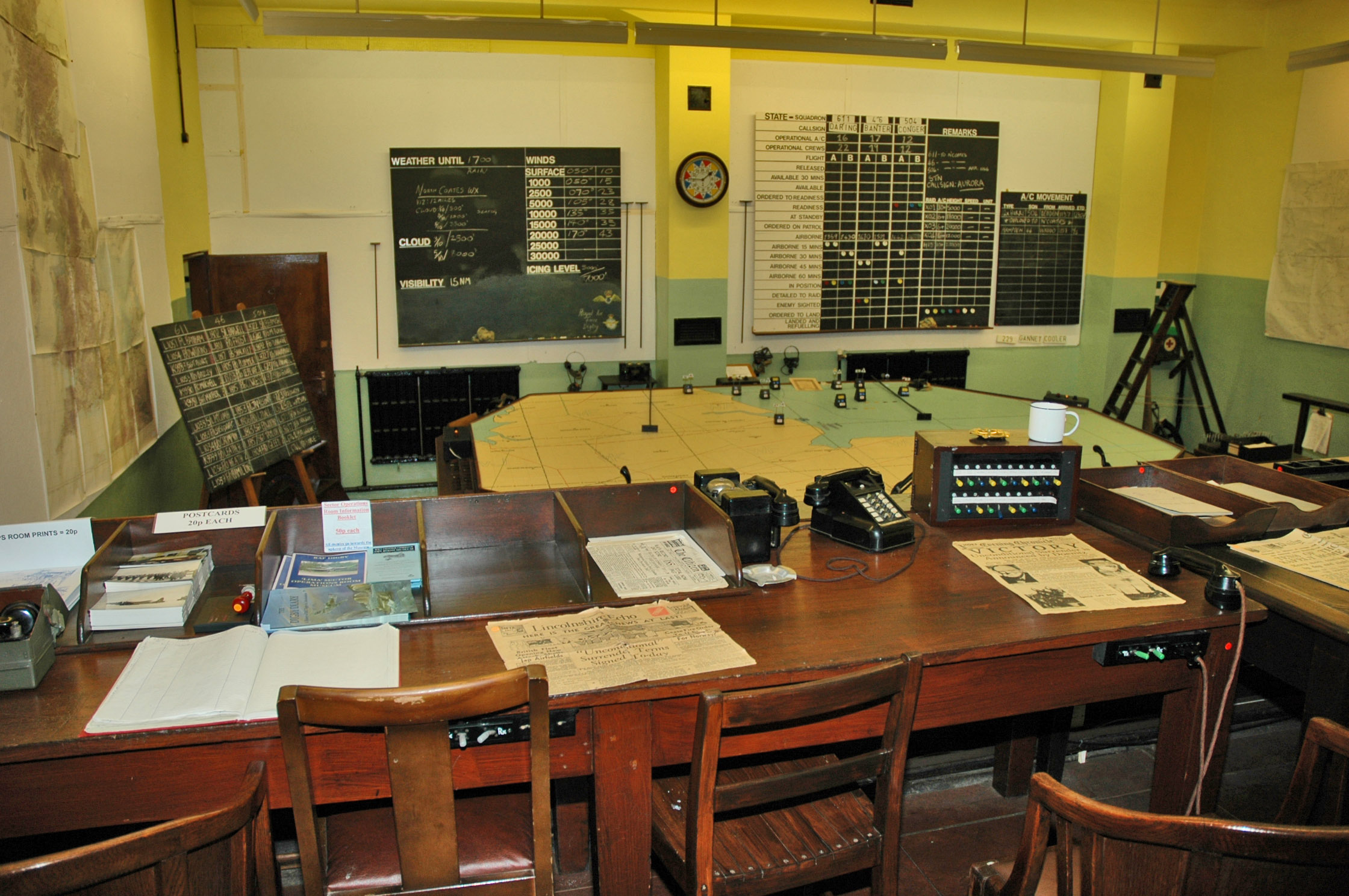Sector clock on:
[Wikipedia]
[Google]
[Amazon]
 A Sector clock or colour change clock was a round colour-coded
A Sector clock or colour change clock was a round colour-coded
 The Sector Clock was a fundamental part of
The Sector Clock was a fundamental part of
 A Sector clock or colour change clock was a round colour-coded
A Sector clock or colour change clock was a round colour-coded clock
A clock or a timepiece is a device used to measure and indicate time. The clock is one of the oldest human inventions, meeting the need to measure intervals of time shorter than the natural units such as the day, the lunar month and t ...
used at military airfields and observation posts in the United Kingdom to help track the movements of enemy aircraft and control friendly aircraft.
History
Originally known as "colour change clocks", they were introduced during the First World War by the Royal Flying Corps in 1917 to monitor the movements of German aircraft. Later, during the Second World War they played a significant role in theBattle of Britain
The Battle of Britain, also known as the Air Battle for England (german: die Luftschlacht um England), was a military campaign of the Second World War, in which the Royal Air Force (RAF) and the Fleet Air Arm (FAA) of the Royal Navy defende ...
and continued to be used by the Royal Air Force
The Royal Air Force (RAF) is the United Kingdom's air and space force. It was formed towards the end of the First World War on 1 April 1918, becoming the first independent air force in the world, by regrouping the Royal Flying Corps (RFC) an ...
and Royal Observer Corps
The Royal Observer Corps (ROC) was a civil defence organisation intended for the visual detection, identification, tracking and reporting of aircraft over Great Britain. It operated in the United Kingdom between 29 October 1925 and 31 Decembe ...
(ROC) as simple clocks and keepsakes, until the end of the Cold War period. These clocks are now sought after by collectors of aeronautica.
There were two versions of the clock issued, either for RAF Sector use or for the ROC. The RAF Sector Clock has an old style "King's Crown" RAF Warrant Officer
Warrant officer (WO) is a rank or category of ranks in the armed forces of many countries. Depending on the country, service, or historical context, warrant officers are sometimes classified as the most junior of the commissioned ranks, the mos ...
's insignia under the "24" at top centre. The ROC clock has a plain face with no insignia.
Clocks were either electrical or mechanical. Electric clocks usually have the coloured segments pointing inwards, mechanical clocks have the segments pointing outwards.
The United States Army Air Force
The United States Army Air Forces (USAAF or AAF) was the major land-based aerial warfare service component of the United States Army and ''de facto'' aerial warfare service branch of the United States during and immediately after World War II ...
(USAAF) also adopted the RAF sector clock with a coloured block pattern rather than triangles.
Function
 The Sector Clock was a fundamental part of
The Sector Clock was a fundamental part of Ground-controlled interception Ground-controlled interception (GCI) is an air defence tactic whereby one or more radar stations or other observational stations are linked to a command communications centre which guides interceptor aircraft to an airborne target. This tactic was ...
(GCI) before modern computerized systems were put in place for airspace control. The clock face is marked with five-minute red, yellow and blue triangular segments. It has an outer 12-hour ring and an inner 24-hour
The modern 24-hour clock, popularly referred to in the United States as military time, is the convention of timekeeping in which the day runs from midnight to midnight and is divided into 24 hours. This is indicated by the hours (and minutes) pass ...
dial.
Aircraft position was recorded along with the colour of the triangle beneath the minute hand at the time of sighting. This was reported to sector headquarters, where counters of the relayed colour were used to represent each air raid on a large table with a map of the UK overlaid with a British Modified Grid. As the plots of the raiding aircraft moved, the counters were pushed across the map by magnetic "rakes". This system enabled "Fighter Controllers" to see very quickly where each formation was heading and allowed an estimate to be made of possible targets. The age of the information was readily apparent from the colour of the counter. Because of the simplicity of the system, decisions could be made quickly and easily.
See also
*Battle of Britain Bunker
The Battle of Britain Bunker is an underground operations room at RAF Uxbridge, formerly used by No. 11 Group Fighter Command during the Second World War. Fighter aircraft operations were controlled from there throughout the War but most notabl ...
* Dowding system
The Dowding system was the world's first wide-area ground-controlled interception network, controlling the airspace across the United Kingdom from northern Scotland to the southern coast of England. It used a widespread dedicated land-line telep ...
References
{{Reflist Clock designs Battle of Britain World War II military equipment of the United Kingdom Military aviation